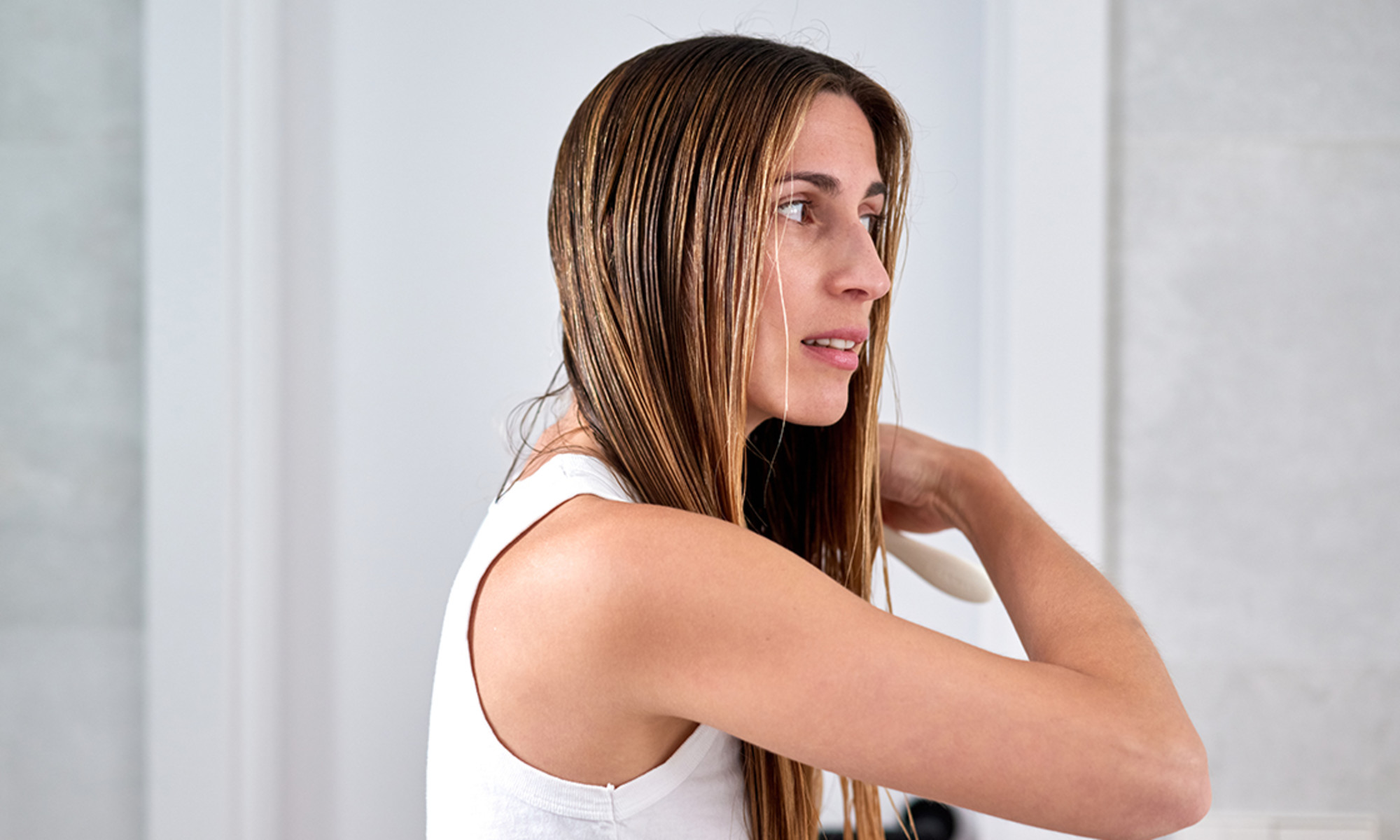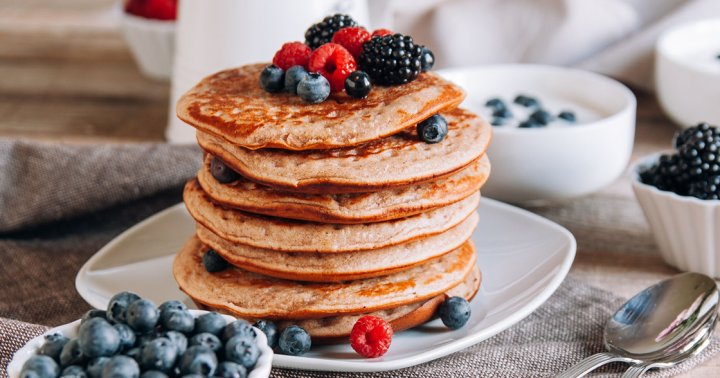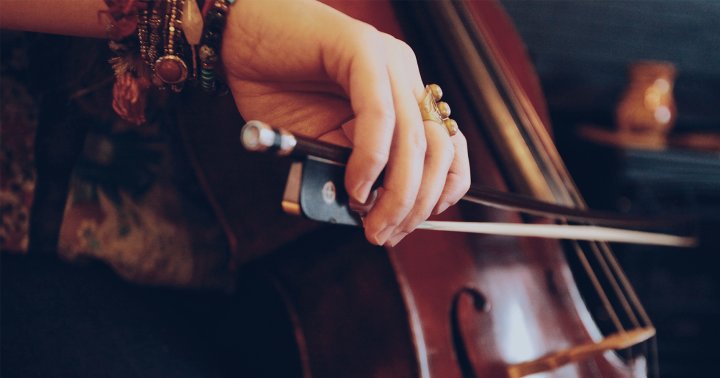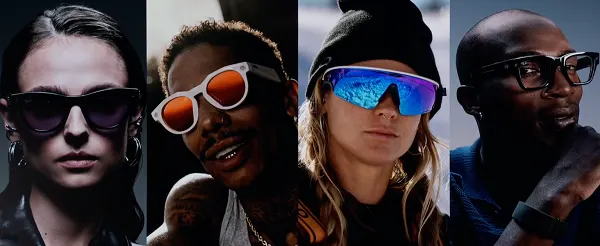Want Lighter Hair Without The Bleach? Here's What Experts Want You To Do
There’s a lot of power in a hair transformation.


mbg Assistant Beauty Editor
mbg Assistant Beauty Editor
Hannah Frye is the Assistant Beauty Editor at mindbodygreen. She has a B.S. in journalism and a minor in women’s, gender, and queer studies from California Polytechnic State University, San Luis Obispo. Hannah has written across lifestyle sections including health, wellness, sustainability, personal development, and more.
Image by Guille Faingold / Stocksy May 17, 2023 Our editors have independently chosen the products listed on this page. If you purchase something mentioned in this article, we may There’s a lot of power in a hair transformation. Whether you opt for a fresh haircut or alter your color, there’s surely a refreshing feeling to follow. However, the health of your hair may beg to differ. Bleach is arguably the most damaging, yet also the most powerful. For this reason, many folks wonder is hair can be lightened at all without using bleach. To come, experts answer this question and explain how to brighten your strands in a healthy fashion. 
Advertisement
This ad is displayed using third party content and we do not control its accessibility features.
Is it possible to lighten hair without bleach?
We’re going to cut to the chase: You’re not going to see a dramatic difference in your hair color without using bleach. Sure some methods may alter the hue of your hair which can make it look brighter, but it’s basically impossible to see a bleach-like effect without using the real thing.
Not to mention, using at-home, natural or DIY options does not mean it's inherently better for hair. Quite the opposite! Many popular DIY methods of hair lightening could potentially do more damage to your strands than just visiting a colorist in the first place.
And to be frank, bleach isn’t all bad. If you and your stylist use this ingredient strategically and cautiously, your hair could be just fine. How so? “By taking it slow, completing the project overtime in separate sessions,” says Emily Claire, Davines Colorist, Educator and Stylist at Rob Peetoom Salon NYC tells mbg.
Still, it’s still fair to wonder what other methods can brighten the tone of your hair. Especially if you're not looking for a color overhaul, and just maybe want a brightening boost.
Below, a few possible options.
How to lighten hair without bleach
As mentioned above, these methods won’t take your hair from brunette to blonde like bleach would. Furthermore, not all of them are healthy for your hair, so keep reading for the 101 on common hair lightening methods.
Advertisement
This ad is displayed using third party content and we do not control its accessibility features.
You’ve probably heard of the DIY lemon juice solution before, but does it actually work? Maybe, but it’s not necessarily better than bleach. “Lemon juice is high in citric acid and almost acts like a bleach for the hair,” explains certified trichologist and founder of Colour Collective Kerry Yates.
“However, word of caution, lemon juice with its high concentration of citric acid can be damaging to the hair when misused,” Yates warns. “Citric acid can negatively impact overall cuticle health,” which means moisture loss, dull strands, and increased breakage.
mbg verdict:
Skip the lemon juice solution and opt for a low and slow bleach transformation—more on that in a bit.
Advertisement
This ad is displayed using third party content and we do not control its accessibility features.
2.
Purple shampoos & conditioners
“Purple shampoos do not ‘lighten or brighten’ the hair—this is a common misconception,” Claire explains. “They simply neutralize yellow in the hair,” she adds, meaning those brassy hues will be turned into a bright, ashy color.
“It is not necessarily lighter, but our eye will trick us into thinking the cooler shade is lighter and brighter,” Yates adds.
It’s important to note that purple shampoo and conditioner should be kept for those with already lightened hair. For anyone with a brunette base looking to eliminate orange hues, Claire recommends a blue shampoo and conditioner, like the Davines Heart of Glass line.
mbg verdict
If you have light hair already, purple shampoos and conditioners can color-correct brassiness—thereby making the appearance lighter, even if it's not actually lighter. If you have brunette strands, you'll want a blue shampoo and conditioner to color-correct orange hues.
Advertisement
This ad is displayed using third party content and we do not control its accessibility features.
Another popular DIY: Vinegar hair baths. However, Yates notes that she’s not a huge fan of these baths for lightening purposes.
“I think of it like a diluted ‘stripper’ in that it takes off excess product build-up and can be relatively harmless to overall hair health,” she notes. However, it does have an even higher pH than lemon juice, so it’s not great to use often.
Plus, it’s simply not that effective, so why put your hair at risk for little to no change in color?
mbg verdict
Vinegar hair baths have a high pH so it may damage the strands—nor are they all that effective.
Advertisement
This ad is displayed using third party content and we do not control its accessibility features.
Ah yes, the classic UV-induced hair lightening method. “Your hair naturally lightens with continued exposure to the sun’s UV rays,” Yates confirms. However, “The UV rays actually degrade both the protein and the melanin resulting in the ends mainly appearing lighter.”
While your beach-goer blonde hue may look nice in the moment, the health of your hair is surely struggling and may appear dry, brittle, or frizzy.
You don’t need to hide your hair from the sun 24/7, but sun bathing for the sake of lighter strands isn’t a good idea. Plus, 80% of physical skin aging is caused by sun damage1, so the cons definitely outweigh the potential pros on this one.
mbg verdict
Sun exposure can lighten strands, but UV radiation will damage the strands in the long-run. We recommend using an antioxidant-rich spray before heading to the beac—as well as a scalp sunscreen.
Last but not least, we have chamomile tea. Some claim this ingredient can gently lighten the strands, but experts disagree. It may be a healthy addition to your hair routine functionally, but it’s not going to mimic bleach.
“Chamomile does contain a flavonoid called quercetin which is used to help stimulate hair growth (positively impacting the hair life cycle) and generate MORE natural melanin within the hair,” says Yates, which means darker strands, if anything.
So no, you shouldn’t use chamomile for lightening your hair. However, keep an eye out for chamomile as a healthy ingredient in other hair care and hair growth products.
mbg verdict
Chamomile tea rinses can be great for hair health—but it won't lighten hair.
How to safely lighten hair with bleach
So yes, bleach is very harsh on the hair, but so is lemon juice and sunlight. To be frank, you’ll be in a better position going to a responsible colorist who can safely lighten your hair without causing too much damage. Below, a few guiding principles to keep in mind.
How to protect hair from damage when lightening
When you’re going through the process of lightening your hair, serious at-home care needs to take place. Below, a few important tips.
FAQ
Is it possible to dye your hair lighter without bleach?
We’re going to cut to the chase: You’re not going to see a dramatic difference in your hair color without using bleach. Sure some methods may alter the hue of your hair which can make it look brighter, but it’s basically impossible to see a bleach-like effect without using the real thing.
What is the easiest way to lighten hair?
So yes, bleach is very harsh on the hair, but so is lemon juice and sunlight. To be frank, you’ll be in a better position going to a responsible colorist who can safely lighten your hair without causing too much damage. Opt for baby highlights, separate your highlight appointments by 3 or 4 months, and find a colorist you trust to lighten your hair without ruining it.
Will purple shampoo lighten hair?
“Purple shampoos do not ‘lighten or brighten’ the hair—this is a common misconception,” says Emily Claire, Davines Colorist, Educator and Stylist at Rob Peetoom Salon NYC. “They simply neutralize yellow in the hair,” Claire adds, meaning those brassy hues will be turned into a bright, ashy color. “It is not necessarily lighter, but our eye will trick us into thinking the cooler shade is lighter and brighter,” Yates adds.
The takeaway
So can you have bleach-like results without using bleach? No, not exactly. However, you can use bleach responsibly by taking it slow, going to a trusted colorist, and taking extra great care of your hair at home via bond building treatments and hydrating products. For the 101 on babylights and what to ask your colorist, read this guide.

 Troov
Troov 
































